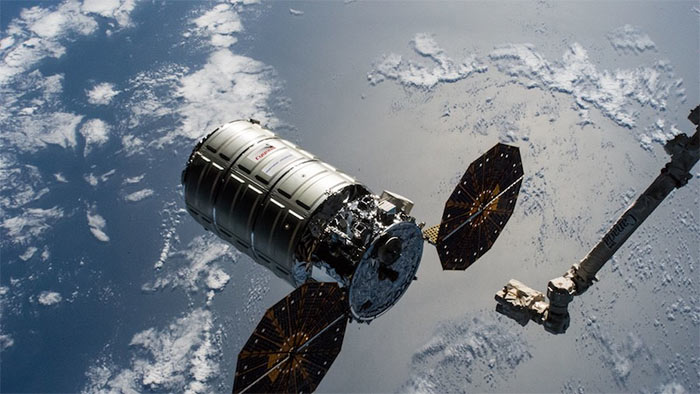Sri Lanka’s first satellite RAAVANA-1 reaches ISS

The rocket carrying Sri Lanka’s first ever research satellite ‘RAAVANA-1’ has successfully reached the international Space Station (ISS).
RAAVANA-1 is a research satellite built by two Sri Lankan engineers named Tharindu Dayaratne and Dulani Chamika, from the University of Peradeniya and the Arthur C. Clarke Institute for Modern Technologies.
Antares rocket carrying Cygnus cargo spacecraft carried the satellites to the ISS.
Roughly 37 hours after launching from the Mid-Atlantic Regional Spaceport (MARS) in Virginia, Northrop Grumman’s NG-11 Cygnus spacecraft has arrived at the International Space Station with 7,600 lbs (3,442 kg) of supplies, according to NASASpaceFlight.com.
For the NG-11 Cygnus, the craft’s arrival at the Station followed a little less than 37 hours of orbital phasing that began with a flawless launch from the Mid-Atlantic Regional Spaceport on Virginia’s Wallops Island on Wednesday atop NGIS’ Antares 230 rocket.
The website added that after lifting off the pad, the Antares rocket pitched southeast to take Cygnus on its multi-minute ride to orbit.
After orbit insertion and deployment, Cygnus successfully deployed its two power generating solar arrays and began a series of burns to raise its orbit from the initial 205 km injection orbit up to the roughly 409 km orbit of the International Space Station.
For Cygnus’ ride to orbit, the Antares rocket’s Castor 30XL second stage’s mission did not end with the deployment of Cygnus but rather continued on with the deployment of 61 small satellites – including 60 ThinSats for the Virginia Commercial Space Authority and one NASA-sponsored 3U CubeSat called Student Aerothermal Spectrometer Satellite of Illinois and Indiana CubeSat (SASSI2).
Cygnus is scheduled to depart the Station in July to begin several months of free-flight testing of news systems before reentering Earth’s atmosphere and burning up over the ocean.
RAAVANA-1 is set to be launched into orbit by the end of May or the outset of June, subsequently, it is expected to orbit the Earth for approximately 15 times per day and its speed is estimated at 7.6 km per second.
The satellite was designed and built at the Kyushu Institute of Technology in Japan and is 1,000 cubic cm in size and weighs 1.1 kg.
RAAVANA-1 was officially handed over to the Japan Aerospace Exploration Agency on Feb. 18.
The satellite is expected to fulfill five missions including the capturing of pictures of Sri Lanka and its surrounding regions.
The RAAVANA-1 is expected to orbit 400 km away from earth. It will have a minimum lifespan of one and a half years.
(NASASpaceFlight.com / Ada Derana)
Latest Headlines in Sri Lanka
- Sri Lanka’s inflation drops further to -4.0% in January 2025 February 21, 2025
- Man shot dead at Ja-Ela beach February 21, 2025
- Three suspects, including Police constable, arrested in Middeniya shooting incident February 21, 2025
- Gunman reveals woman’s role in killing Ganemulla Sanjeewa February 21, 2025
- Sri Lanka President vows to eradicate underworld influence February 21, 2025



This satellite is design and built by Japan and has nothing to do with Sri Lanka other than using Sri Lanka as a launch base because after the world war Japan and Germany was prohibited to make air crafts and Satellites.
The satellite was designed and built at the Kyushu Institute of Technology in Japan and is 1,000 cubic cm in size and weighs 1.1 kg.
Ranjith, Sour grapes mate.
Two SL Youngsters pioneers in this project.
Say congrats to them, mate.
Fareena Fakutelly . Stupidity is the name of the game here. If you believe this you will believe anything mate.